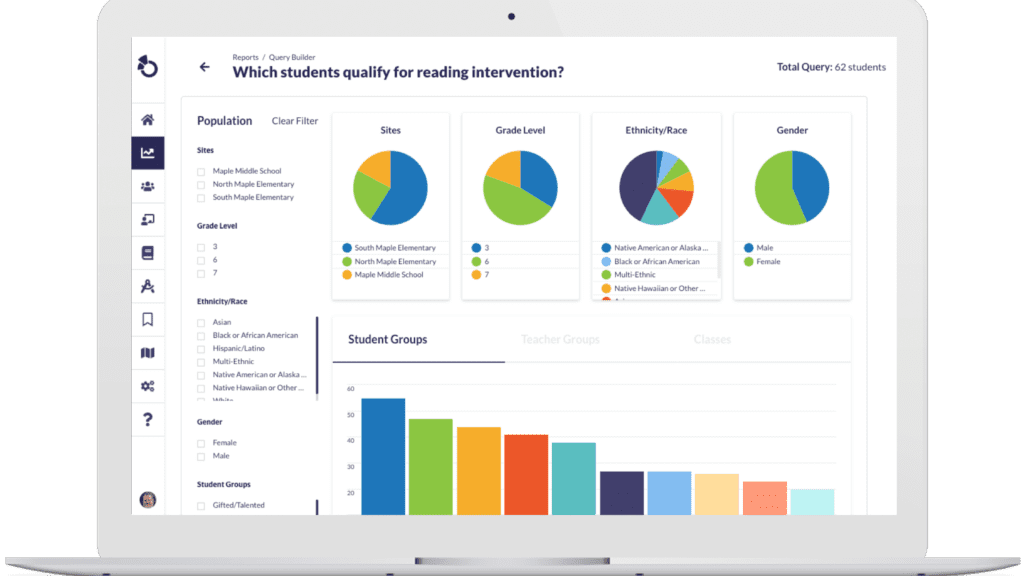As students return to school, administrators are keeping a close eye on attendance. Districts still in recovery mode from the high levels of chronic absenteeism following the pandemic are looking at the results from the strategies they have implemented, while those who have made gains want to ensure the improvements stick.
 Hamilton County School District in Florida is firmly in the second category. The schools in the district have seen real progress, says Chris Combass, Director of Teaching and Learning Services. “From the 2023-24 school year to 2024-25, chronic absenteeism percentages dropped at both our elementary and high school campuses,” he says.
Hamilton County School District in Florida is firmly in the second category. The schools in the district have seen real progress, says Chris Combass, Director of Teaching and Learning Services. “From the 2023-24 school year to 2024-25, chronic absenteeism percentages dropped at both our elementary and high school campuses,” he says.
Combass credits the early warning system reports in Otus as being especially helpful in quickly identifying students who need support. “Having attendance and academic data side by side in Otus has really been a game changer for us. It's made it easier for our teachers and admin to spot patterns and start meaningful conversations before attendance becomes a bigger issue,” he says.
Hamilton County Schools also strive to anticipate how attendance might be impacting learning progress. Combass says the Standards Analysis tool within Otus is crucial for giving educators a clear picture of this impact so they can help families understand the consequences of missing class. “We can sit down with those families and show what kind of negative impact absenteeism can have on students,” he said.
The Stakes of Chronic Absenteeism
A recent study in California calculated that the lifetime social gain for each student who graduates from high school is $478,440. If they enroll in college, the gain increases to $681,930. While that might not incentivize a student to get out of bed, it is a wake-up call for families and community stakeholders to show the big-picture importance of focusing on school attendance.
At the individual level, students’ academic and developmental trajectories suffer when they miss more than two days per month. This is true even in the early grades. And their classmates are impacted as well. A 2023 study found that kindergarteners who attend schools where absenteeism is a concern went on to perform more poorly on state assessments in third grade.
Bio-Med Science Academy STEM School in Ohio uses SIS system reports to monitor attendance and Otus to track plans and help all parties visualize the related academic growth and gaps. Founding Chief Administrative Officer Stephanie Lammelein appreciates how the graphic elements within Otus help families understand what they’re looking at without the acronyms and jargon that educators might use.
“Getting a platform that helps us articulate what we’re doing and show all the levels of what we’re doing for their kid very specifically is very helpful,” Lammlein says. “We’ve started using the Otus platform as an early warning system to see a correlation between lack of attendance and lower performing students. Especially for the teachers, and then when you’re having parent meetings, to be able to sit down with them and show the negative impact that absenteeism can have on students is powerful.”
Principles for Prevention
While attendance data is often thought of as pertaining only to students, it can also indicate deeper structural issues at the school or system level. Recognizing this, many districts are implementing the Multi-Tiered System of Supports (MTSS) framework, a structured, proactive approach for addressing barriers to success across academics, behavior, and more. MTSS gives schools a leg up in reducing absences when they are still at the concerning level (missing 5-9% of days) and before they reach the threshold for chronic absenteeism (missing more than 10% of days).

MTSS calls for providing equitable services to all students as well as resource-intensive support to those with the highest need. In the case of chronic absenteeism, students’ immediate needs may include health challenges, transportation issues, lack of engagement, housing or food insecurity, safety concerns, unstable home environments, and family obligations.
Otus’ functionality around attendance includes the capability to note these individual needs as well as:
- Identify patterns of frequent absences.
- Customize interventions such as progress monitoring plans, individualized support, counseling services, family outreach, and referrals to community resources.
- Monitor attendance goals in real time so educators can provide timely feedback.
- Facilitate collaboration via shared data and insights.
At the school and district level, the actionable data in Otus can support decision-making around additional strategies such as professional development, community partnerships, and family engagement.
Combass has seen the benefits at Hamilton County Schools. “We have definitely experienced how powerful it is when students and families feel like true partners in the process,” Combass says. “Otus really helps us make that happen.”
Request a demo!
See exactly how Otus can help your school accelerate student growth and improve student outcomes – all while saving educators time.





